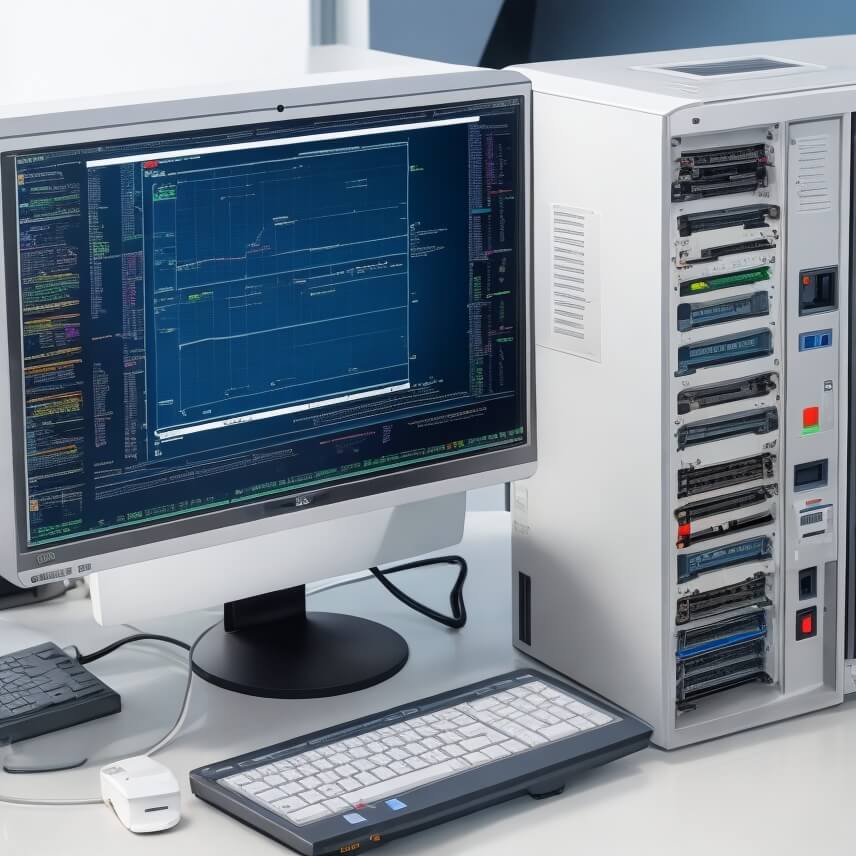In a significant stride for astrobiology, a team of researchers has introduced an innovative technique that employs artificial intelligence (AI) to distinguish whether a sample from another celestial body is biological or non-biological, with an impressive accuracy rate of 90%.
Spearheaded by Professor Robert Hazen from the Carnegie Institution’s Geophysical Laboratory and George Mason University, this pioneering development holds the potential to reshape the search for extraterrestrial life.
This novel method departs from the conventional practice of identifying specific molecules within a sample. Instead, it capitalizes on AI’s remarkable capability to discern subtle differences in molecular patterns. This approach enables scientists to discriminate between living and non-living samples, significantly advancing astrobiological research.
Potential in unmanned space missions
One of this breakthrough’s most promising aspects is its ability to equip unmanned spacecraft with intelligent sensors, enabling them to seek signs of life on distant celestial bodies actively. Professor Hazen elaborates, “It opens the way to utilizing intelligent sensors on robotic spacecraft, landers, and rovers to search for signs of life before the samples return to Earth.” The integration of AI into these missions could provide unprecedented insights into the existence of life beyond our planet.
Beyond its applications in the cosmos, this innovative method could shed light on the mysteries surrounding ancient terrestrial rocks. Additionally, it may provide fresh insights into samples previously collected by the Mars Curiosity rover’s Sample Analysis at Mars (SAM) instrument.
Lead author Jim Cleaves from the Earth and Planets Laboratory at the Carnegie Institution for Science suggests, “We’ll need to adapt our method to match SAM’s protocols, but there’s a possibility that we already possess data to ascertain the presence of molecules from an organic Martian biosphere.” This exciting prospect could transform our comprehension of the Red Planet and its potential for hosting life.
AI’s discerning ability
Unlike traditional methodologies, this method does not rely on the identification of specific molecules or compounds. Instead, it hinges on AI’s ability to differentiate between biotic and abiotic samples. The research team employed NASA-tested techniques to scrutinize 134 diverse carbon-rich samples, encompassing living cells, age-degraded specimens, geologically processed fossil fuels, carbon-rich meteorites, and laboratory-made organic compounds. Among these, 59 originated from biological (biotic) sources, including a grain of rice, human hair, and crude oil. Meanwhile, 75 derived from non-biological (abiotic) sources, such as lab-made compounds like amino acids and samples from carbon-rich meteorites.
Mastery of machine learning
Harnessing a suite of machine learning methods, the research team crafted a model with the remarkable capability to predict whether a sample is abiotic or biotic with exceptional accuracy, hovering at around 90%. Even more astonishing is the method’s capacity to uncover traces of biology in samples that have endured significant decay and alteration over hundreds of millions of years.
Dr. Hazen underscores the method’s potential to identify lifeforms vastly distinct from those on Earth. “These results imply that we might be capable of detecting a lifeform from another planet or biosphere, even if it varies significantly from the life we are familiar with on Earth,” he affirms. This capability raises the prospect of detecting alternative biochemistries, transcending the boundaries of Earth-centric life markers like DNA and amino acids.
The quest for extraterrestrial life
Pursuing extraterrestrial life remains one of the most compelling ventures in modern science. This new method brings us closer to resolving the age-old question: Are we the sole inhabitants of the universe? As Jim Cleaves emphasizes, “The quest for extraterrestrial life continues to be one of the most captivating endeavors in modern science.” With AI as a valuable tool for exploration, the potential for making profound discoveries on other celestial bodies is more enticing than ever.
The method introduced by Professor Hazen and his team represents a paradigm shift in astrobiology. Its ability to differentiate between biotic and abiotic samples with such precision amplifies our capacity to explore distant planets and broadens our understanding of life’s potential beyond Earth. Whether unraveling the secrets of ancient terrestrial rocks on our planet or seeking alternative biochemistries on distant celestial bodies, this AI-powered method offers hope for those who aspire to uncover the mysteries of life beyond our home planet.





